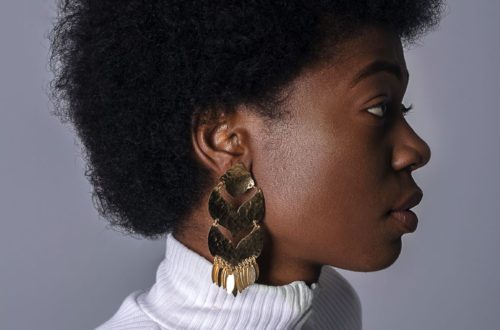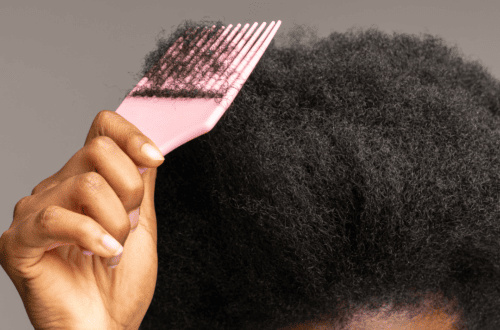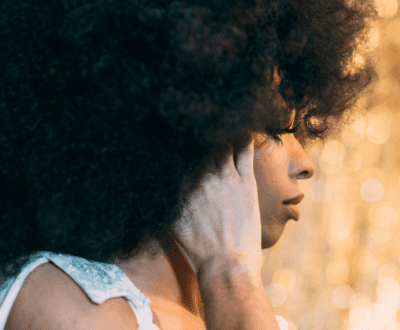
Color-Treated Curls: The Facts About Hair Color
Does changing the color of your hair damage it? For many naturals considering color-treated curls, this is a serious question. And rightfully so. We’ve invested a lot into our curls (time, tears, money, etc.). For many, the value of our hair and our attachment to it goes beyond its physical attributes. The changes we make and the effect that can have on our crowns are never taken lightly.
For some naturals, the topic of color-treated curls can be somewhat controversial. There has been plenty of debate over whether or not hair color is safe. If you’re considering coloring your natural curls, have previously colored your curls, or want more information about hair color, you’re in luck! This week focuses on hair color and straightforward steps you can take to make sure your natural hair is at it’s best should you decide to rock color-treated curls.
Get to know your hair
Knowing the key characteristics of your hair has always been important. Beyond helping you become more intentional about your hair care, they allow some insight into how color will respond to your hair. Key factors like texture, porosity, and density will determine how quickly your hair absorbs color, how well your hair will take to color, and how evenly color gets distributed through your color-treated curls. These characteristics also prove beneficial when selecting products, identifying issues, and setting expectations for your hair.
Facts about hair color
To effectively answer the questions about hair color, we must realize that there are different types of hair color. Varying in strength and permanence, each will have differing effects on the hair. The two categories that most hair color products fall in are oxidative or non-oxidative.
Non-oxidative colors do not need a developer and typically only deposit color on to the hair. Examples of non-oxidative color are:
- Temporary color – deposits color on the hair strand and washes away easily with shampoo
- Semipermanent color – has the potential to penetrate the hair shaft and stain the cuticle, but can still be removed with several washes (lasts 4-6 weeks)
Oxidative dyes require an oxidizing agent, like hydrogen peroxide and an alkalizing agent, to make chemical changes to the hair. Examples of oxidative color are:
- Demipermanent color – contains a developer and will deposit color on the hair without lifting the original color
- Permanent color – contains a developer, will lighten the original hair color, and deposit color onto the hair
Deciding what’s right for you
Regardless of the type, hair color can physically alter the hair. If you are noncommittal or want to experiment a little without chemically changing the hair, non-oxidizing color may be the way to go. They don’t last long, do not require developing agents, and are typically removed with several washes. For a more permanent change, oxidizing hair color may be right for you. These types of color will chemically alter the hair to some degree, and while they can fade and grow out, they aren’t entirely removed by shampooing.
All oxidizing dyes require chemical agents to help open the cuticle and lift your natural hair color. Where oxidative dyes are concerned, the presence or absence of hydrogen peroxide does not indicate the safety of the hair color. The concentration of chemicals present may affect the strength, but they all will ultimately chemically alter the hair.
Effects of color on the hair
Because dyes will penetrate the hair strand, open the cuticle layer, and deposit pigment, they can affect the porosity of the hair. You can expect hair dye to increase your hair’s porosity, making it more prone to dryness. Barring any over-processing, outside of fabulous new color, that should be the only change you see.
Over-processing of the hair can lead to dry, brittle strands, breakage, rough texture, over porous conditions, lack of elasticity, and changes in the curl definition and pattern. Over-processing is not reasonable and is not an expected outcome of hair color.
Caring for your hair before and after color
When considering hair color, you must make sure your hair is healthy. Be consistent with healthy hair practices. Assess and address your hair’s specific needs, and keep up with routine maintenance. This will ensure your hair is in the best condition to receive color.
Once color-treated, you should continue previous practices used to maintain the health of your hair. Color-treated curls can be more porous. Frequent deep conditioning sessions with protein may be beneficial to help fill gaps in the hair strand and combat dryness. Cleansing the hair is still necessary; the use of sulfate-free gentle cleansers will help with moisture, reduce product build-up, and allow you to preserve the integrity of your color.
The decision to add color to your curls is all your own. Knowing the facts about hair color and how it affects your curls makes your decision easier. While color can physically and chemically change your curls, it does not have to lead to damage or loss of definition for your curls. Healthy hair practices are essential and should always be a routine part of hair care. Color-treated or not, healthy hair always wins. Choose the health of your hair over anything else, and you can never go wrong!




